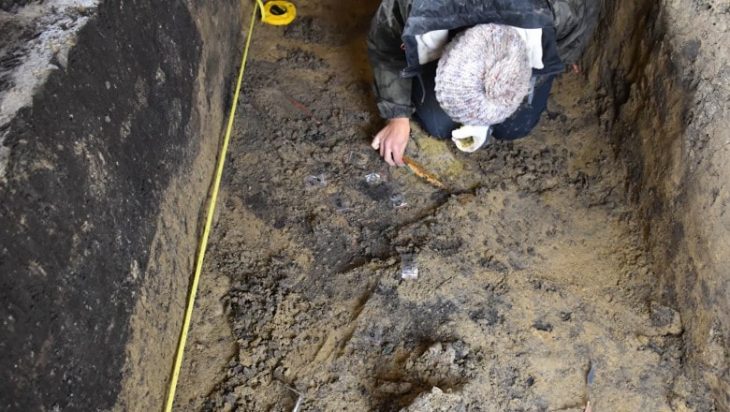A remarkable archaeological discovery has come to light during the construction of the Moldova Highway in Romania. On the Ploiești-Buzău section, excavations revealed a magnificent princely tomb, believed to belong to a formidable warrior from the migration period (4th-5th centuries AD).
The national highway company, CNAIR, announced the exciting find, which includes an array of weapons and ornaments, some crafted from gold. The revelation underscores the importance of archaeological investigations alongside infrastructure projects.
While conducting the feasibility study for the A7 highway, archaeologists identified four archaeological sites on the Ploiești-Buzău stretch. However, due to incomplete land acquisition at the project’s outset, further investigations were necessary once construction began.This additional exploration led to the discovery of four more sites.
CNAIR acknowledged limitations in accessing the entire area due to ongoing land expropriations. Despite these constraints, archaeologists successfully conducted initial investigations on approximately 14 kilometers of the 21-kilometer stretch, uncovering the initial four sites during the feasibility study phase.
“Vasile Pârvan” Institute of Archaeology specialists in Bucharest undertook the meticulous excavation work, braving harsh weather conditions to meticulously gather every detail offered by this extraordinary discovery. Experts consider this warrior tomb to be an archaeological marvel.
The tomb’s contents are as captivating as its existence. An extensive and rich inventory was unearthed, including intricately crafted and adorned weapons, along with exquisite gold ornaments intended for both the deceased and his horse. In total, over 120 artifacts were recovered, with many pieces crafted from gold and embellished with precious stones.
Following the completion of the archaeological research, the public will have the opportunity to witness these remarkable finds firsthand through a special exhibition. This discovery not only sheds light on the lives and burial practices of warriors during the migration period but also underscores the crucial role of archaeology in safeguarding our cultural heritage, even amidst modern development projects.
